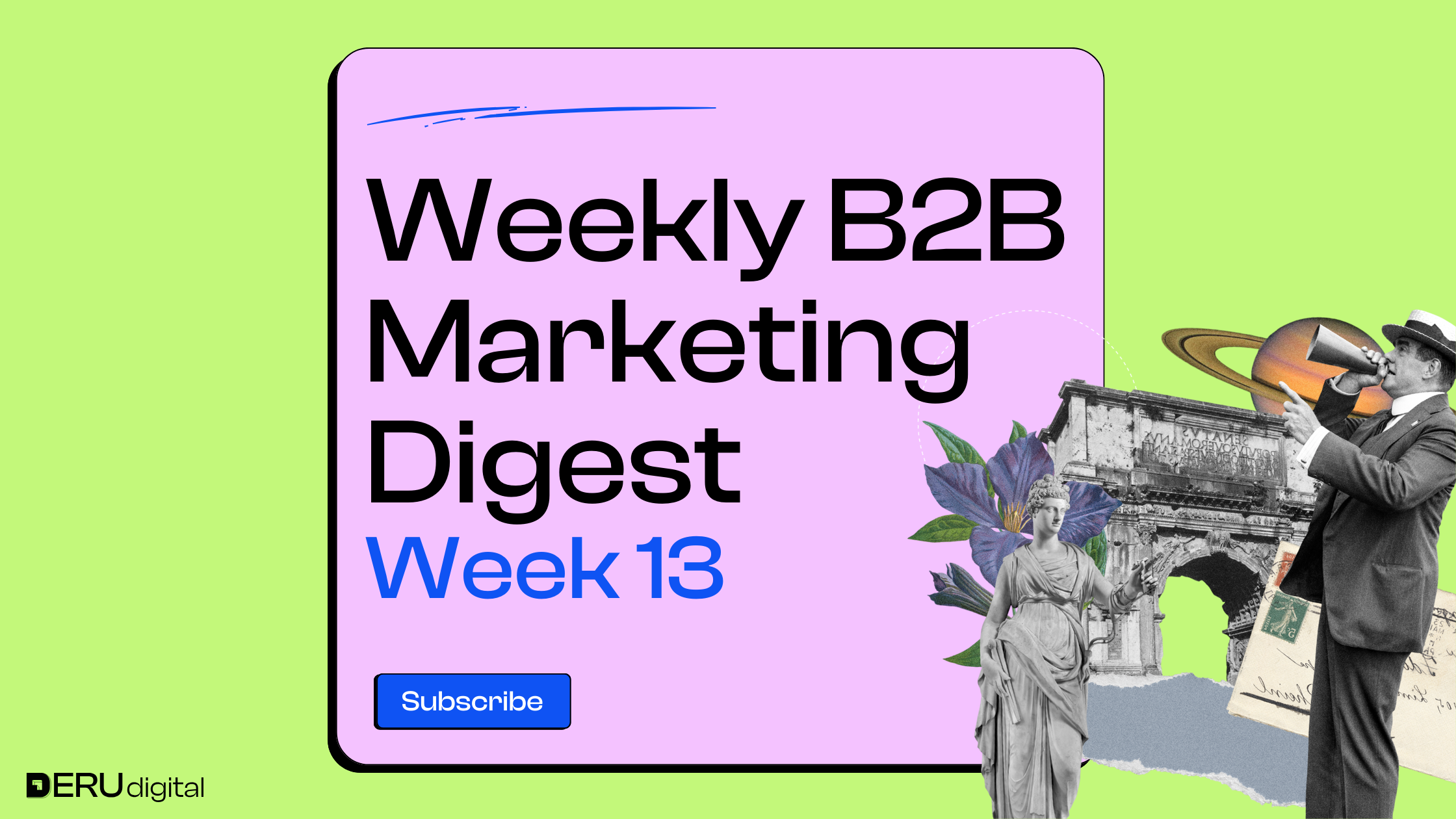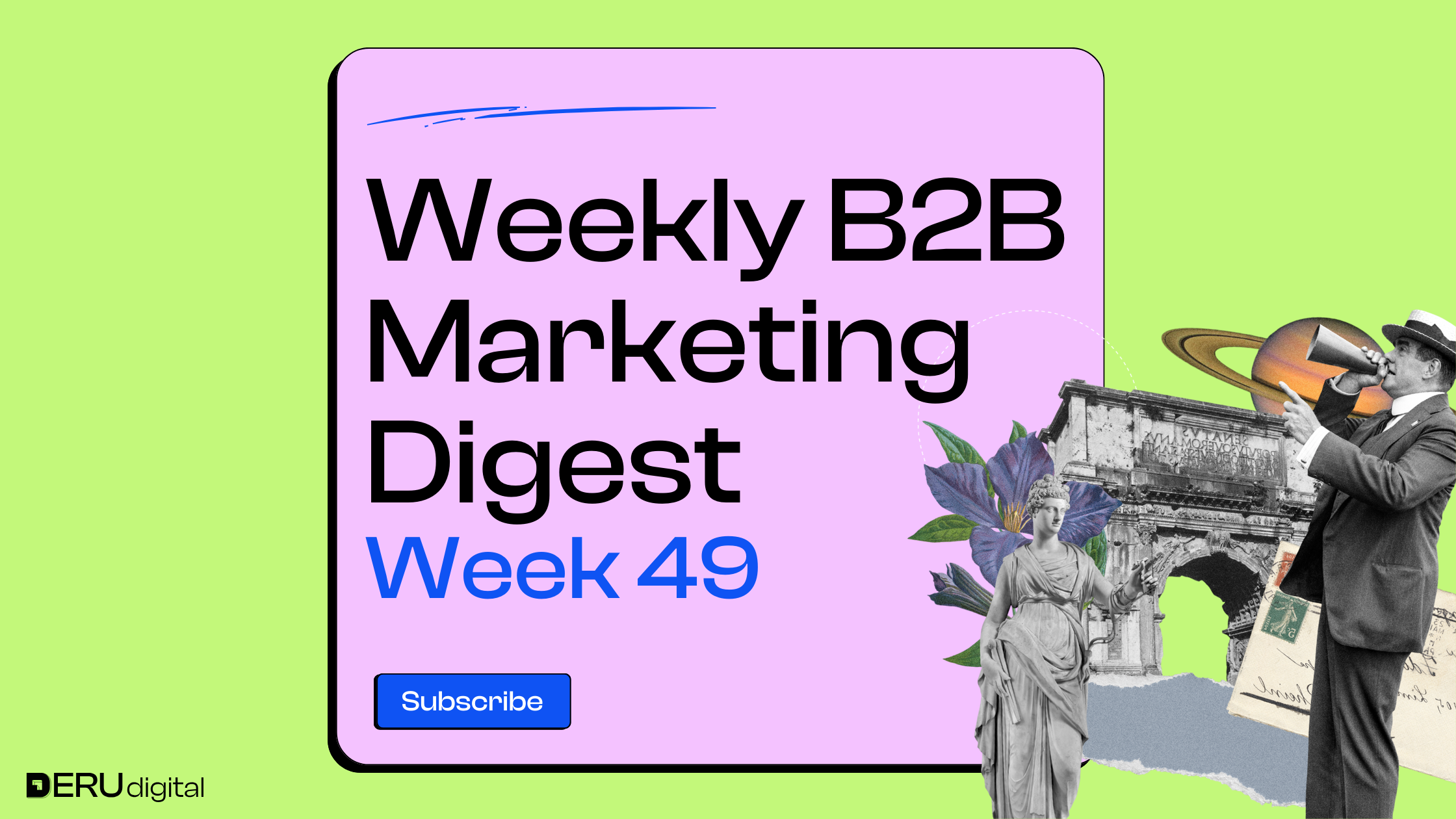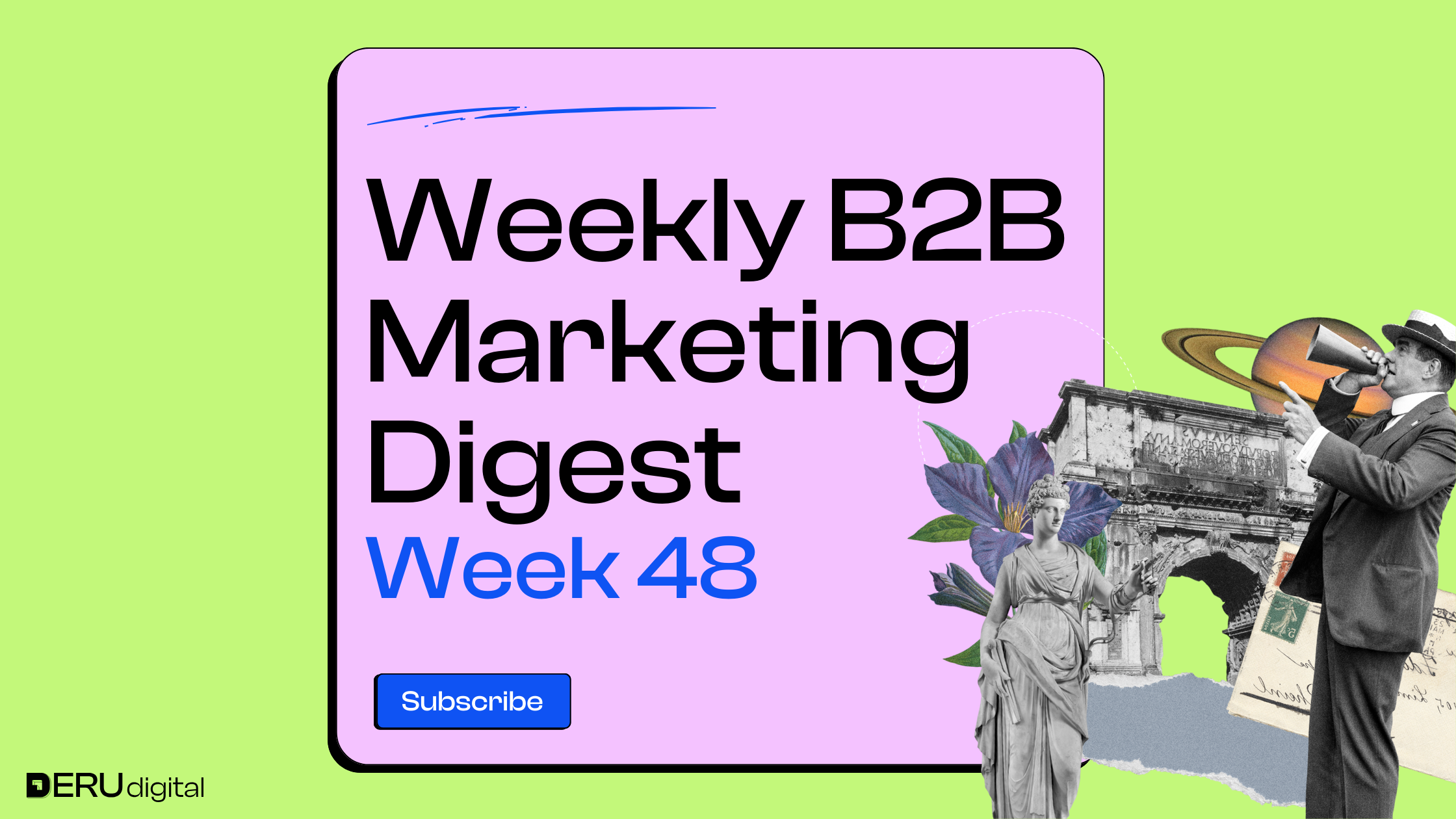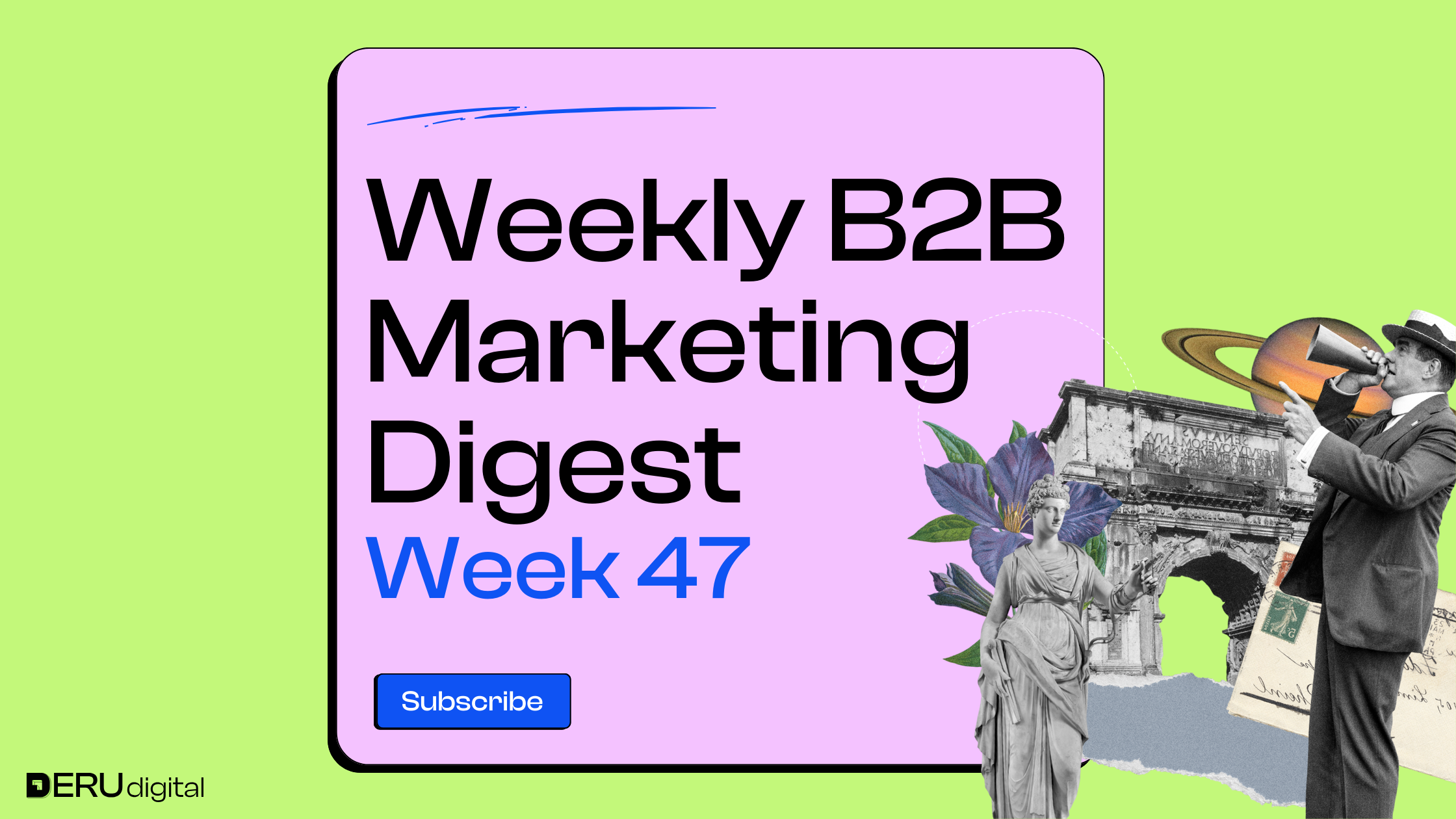

INSIGHTS FROM EXPERTS ON LINKEDIN
Chris Nightingale breaks down a major change in Meta Ads after a woman won a lawsuit against Facebook for using her personal data to target ads. With the UK data watchdog backing the case, more users could opt out, shrinking retargeting lists and making interest-based targeting riskier. Now, first-party data, strong creative, and a solid strategy aren’t just nice to have – they’re essential.

Kerry Cunningham argues that “intent data” is a misleading term – it should really be called “interest signals.” A single person’s interest in your product means little, but when multiple people from the same company show interest, that’s a sign of a buying group. Instead of chasing weak intent signals, marketers should use them to prioritize spend and focus on real opportunities.
Krists Jakabsons says the best way to structure thought leadership ads is to separate them into two buckets: “Industry” and “Product.” Industry posts build credibility by discussing trends and insights, while Product posts focus on selling. The trick? Use Industry posts to attract a cold audience, then retarget them with Product posts once they’ve engaged.

Niclas Prenker shares that LinkedIn has rolled out new features to make campaign management smoother and more effective for B2B marketers. The Media Planner helps with better budgeting, Ads Duplication speeds up execution, and Dynamic UTMs simplify tracking. Plus, AI-driven insights like Marketing Overview, Measurement Insights, and the Campaign Performance Digest make optimizing for real business outcomes easier than ever.

Tim Davidson explains how LinkedIn Ads often dumps most of your budget into just a couple of large accounts, leading to inefficient spending. He tested two workarounds – using impression-based exclusions and splitting campaigns by company size – and saw demo costs drop by over 20% in two months. The takeaway? A little manual tweaking can spread your budget more effectively and improve ad performance.

Mark Ritson breaks down the ongoing debate about brand vs. performance marketing into five essential steps. Each step builds on the last, making advertising more strategic and effective. Check out his video for the full breakdown.
Jason Feifer highlights a genius marketing stunt by Distance Athletics—letting people “steal” their shoes if they could outrun an Olympic sprinter acting as security. The move turned their product into something aspirational, proving that great marketing isn’t about saying you’re great—it’s about making people feel it. Rory Sutherland calls this “placebo marketing,” and this is a masterclass in making a brand unforgettable.
Dan Gee argues that marketers shouldn’t choose between brand and performance—one fuels the other. While demand capture gets quick results, it works best when people already know and trust your brand. Investing in brand isn’t just about perception; it’s a smart business move that drives better performance in the long run.
Liam Moroney pushes back against the idea that brand awareness is low-impact, explaining that it exists on a spectrum – from simple recognition to being top-of-mind in buying situations. Even basic familiarity increases email open rates and search clicks, and as recognition deepens, it leads to more deals and market share. The key takeaway? Any awareness is better than none, and it only grows in value over time.

WHAT'S NEW IN THE INDUSTRY
Most B2B ads fail to capture attention and drive recall, wasting billions in advertising spend. A new study highlights the importance of bold, distinctive branding to stand out in a crowded market. The key to success? Move beyond logos and colors – use sound, repetition, and unique assets to make a lasting impact.

New spam rules from Gmail and Apple’s iOS updates are pushing more emails into the Promotions tab or spam folder, leading to lower engagement rates. Many brands are struggling to reach subscribers, and traditional email strategies aren’t working. To improve deliverability, marketers must refine segmentation, focus on engagement tactics, and adapt to new AI-driven inbox features.
LinkedIn has introduced new tools to help advertisers optimize campaigns with less effort, including AI-driven insights, automated ad duplication, and advanced forecasting. Features like Media Planner and Measurement Insights allow for better planning, tracking, and performance analysis. With these updates, advertisers can streamline execution and improve ROI while spending less time on manual adjustments.
Companies with strong brands can charge higher prices without losing demand, thanks to strategic marketing investments. Pricing power comes from brand equity, customer loyalty, and advertising, and marketers can measure it through willingness-to-pay surveys and A/B testing. Aligning marketing efforts with financial outcomes, like cash flow growth, can help marketers prove their value to CFOs.

Google has agreed to a $100 million settlement in a long-running lawsuit over misleading AdWords billing practices from 2004 to 2012. The lawsuit accused Google of manipulating ad pricing and placements, prompting concerns over transparency in digital advertising. This settlement may lead to stricter regulations and increased scrutiny of ad platforms to ensure fair billing practices for advertisers.
Google is introducing new conversion tracking columns for Demand Gen campaigns, making it easier to compare performance with paid social platforms. The update offers better attribution, view-through conversion tracking, and granular insights at the campaign and ad group levels. Advertisers can now benchmark Demand Gen campaigns more accurately against social media ads, improving optimization strategies.

That’s the scoop for this week! If you found this valuable and any useful insights caught your eye, feel free to share them with your network.
Until next week!



